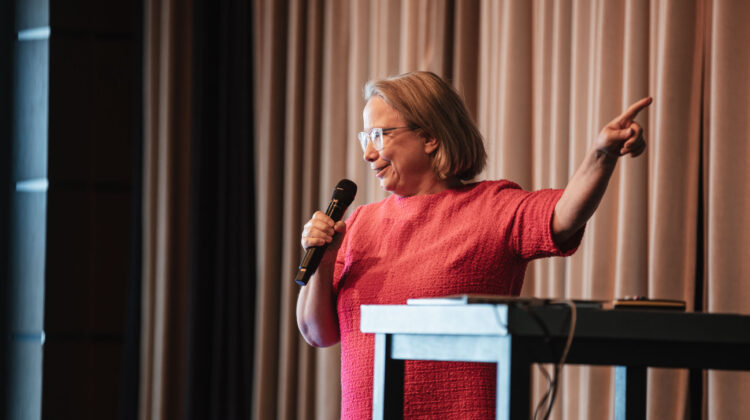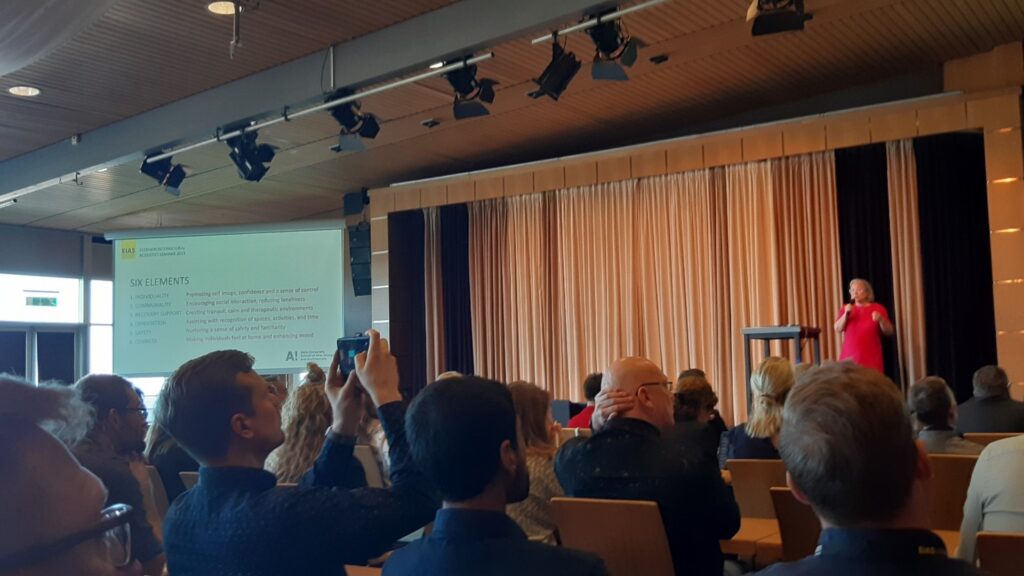
‘Show of hands, who believes buildings can make you sick?’
‘Show of hands, who believes buildings can make you feel better?’

At EIAS 2023 Laura Arpiainen (M.Arch. Professor, Health and Wellbeing Architecture at Aalto University, Finland) spoke about sensory design, focusing on age and dementia friendly environments. When thinking about buildings for healthcare, the first feeling that comes to mind is not always positive. But rather an image of an institution comes to mind. What if the environment could be part of the Care, and support the residents’ health and wellbeing? All the hands in the air indicates that it can!
Age and dementia-friendly
Sensory design is to design for all the senses to achieve the best experience indoors. The visual aspects tend to dominate in architectural design even though our spatial experience is also influenced by the other senses: hearing, smell, touch and taste. When designing age and dementia friendly environments, it needs to be considered that with age, all senses tend to decrease. As hearing is often the last sense to go, it is an important sense to design for in these environments.
MonIA research
Laura Arpiainen has led the MonIA research and development project on integrated housing for people with memory decline at Aalto University. The sensory environment was recognized as an important aspect. And part of the project was Viivi Salminen’s Master’s thesis on the acoustical environment. In search of an ideal acoustical environment for age and memory friendly living, Salminen came up with the following design principles to consider:
- Individuality
- Communality
- Recovery support
- Orientation
- Safety
- Cosiness

These principles can be used as good guidelines in the acoustical design. The implementation might be culture- and situation-specific, thus Laura encourages a discussion with the residents as part of the design process. When acoustics is considered early in the design process, with the help of the above-mentioned principles, it is possible to create environments that feel safe and restorative. A well-designed environment can also assist orientation and communication and therefore support the residents’ autonomy and decrease the feelings of helplessness.
A well-designed environment can also assist orientation and communication and therefore support the residents’ autonomy and decrease the feelings of helplessness.
Laura Arpiainen
We are all getting old at some point, so thank you Laura, Viivi and the MonIA group for helping us create age and dementia-friendly environments!
Watch Laura´s presentation here and read more about her research here!


